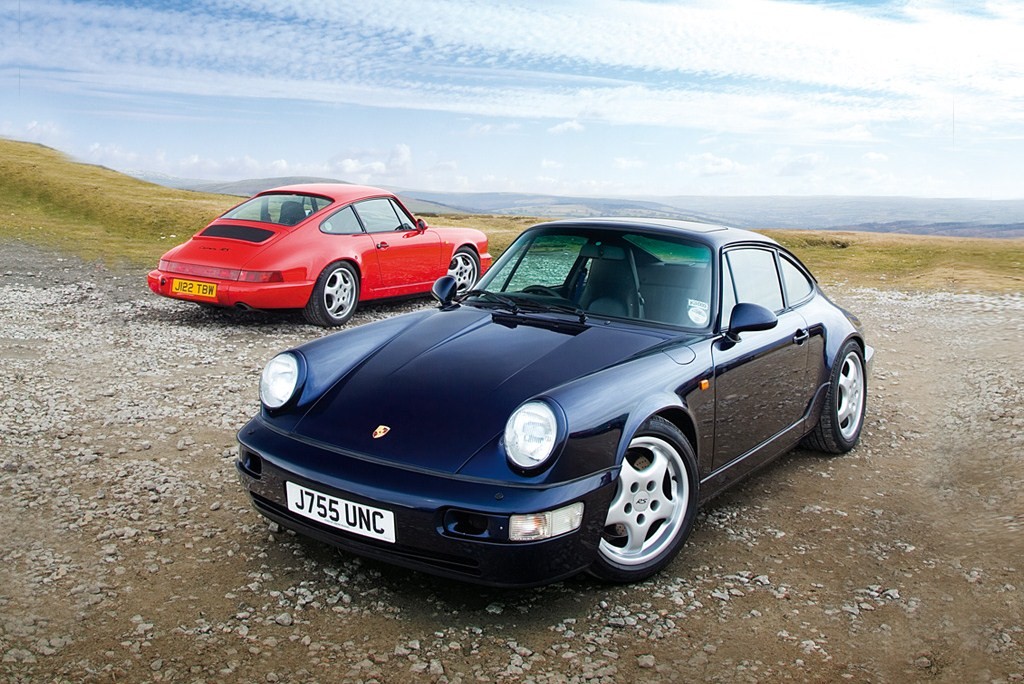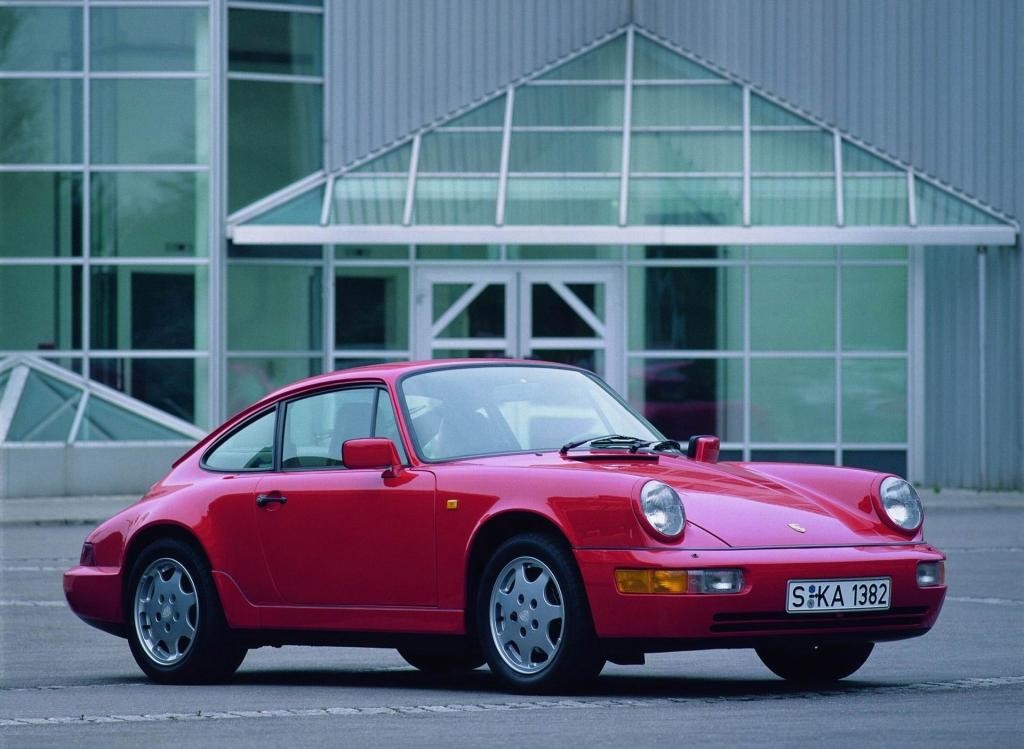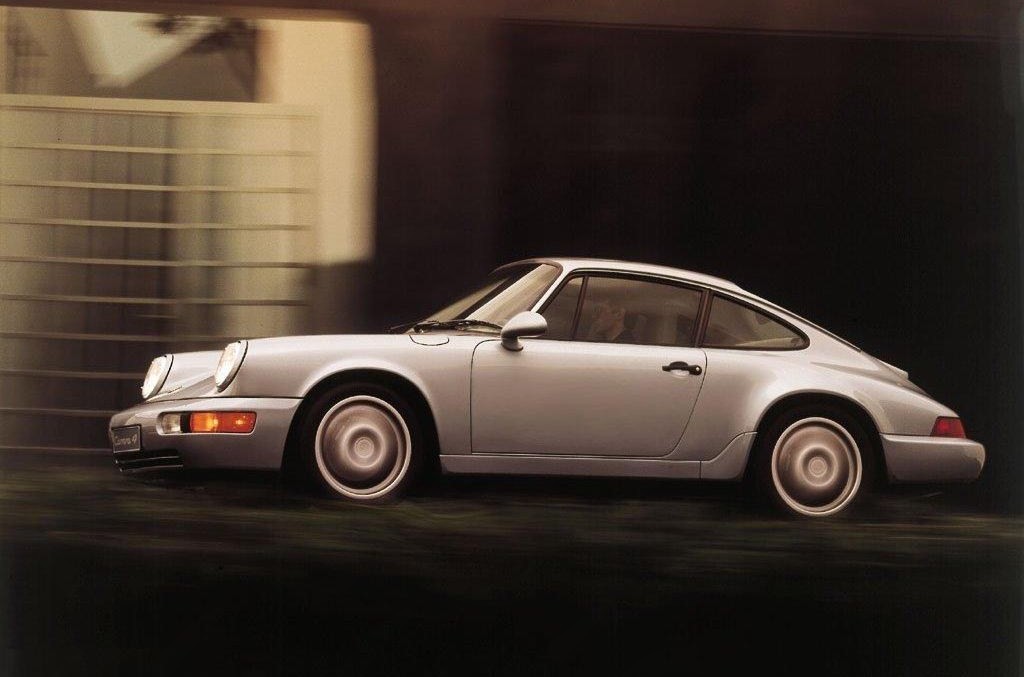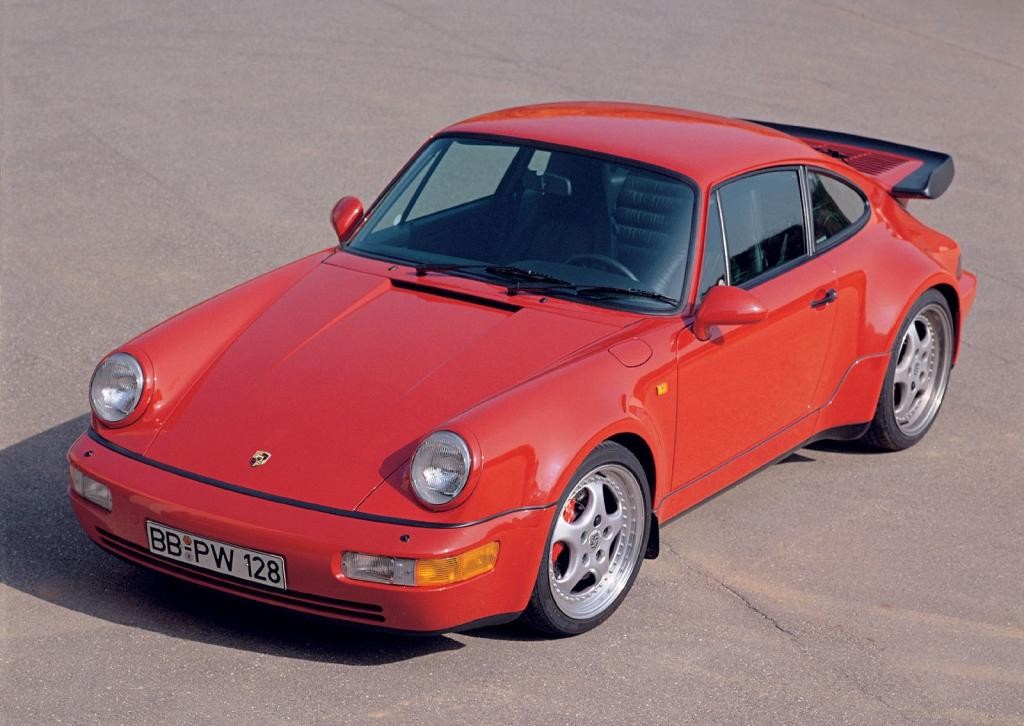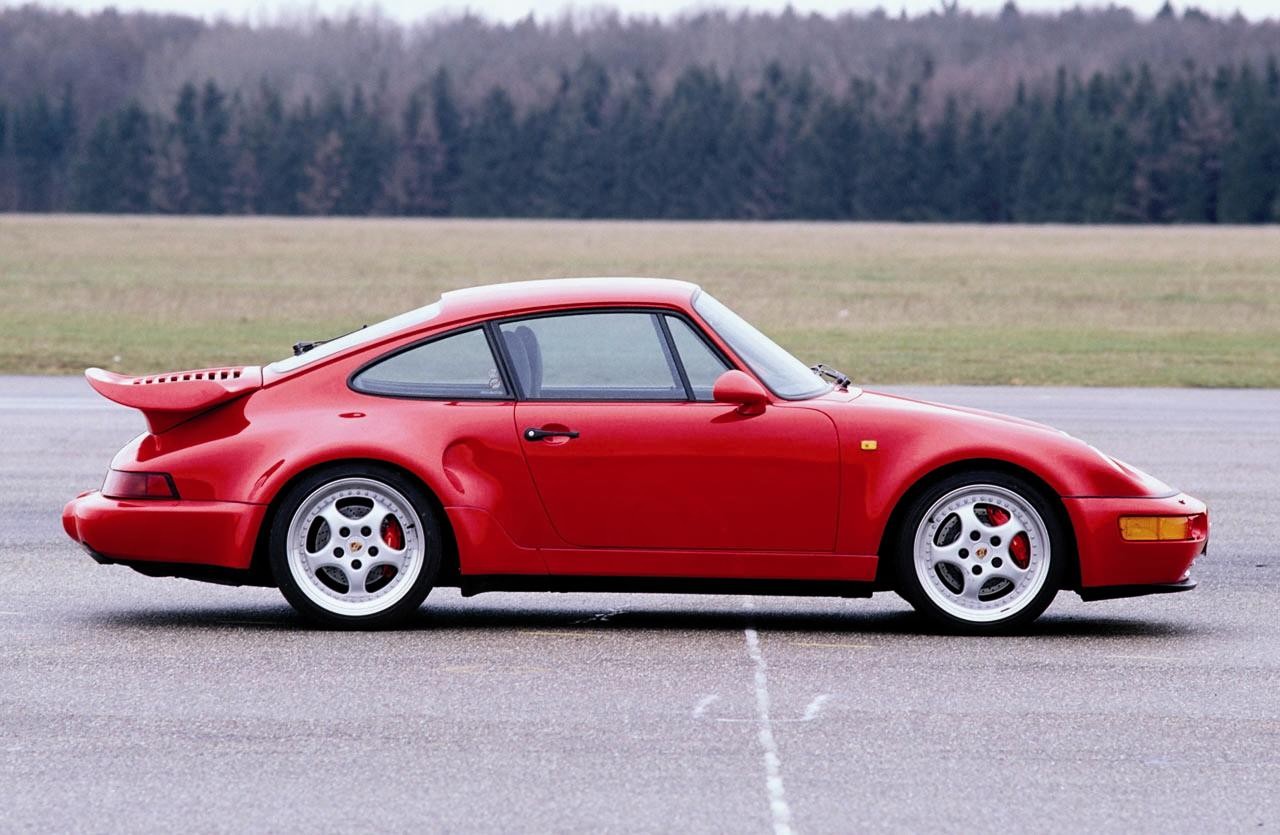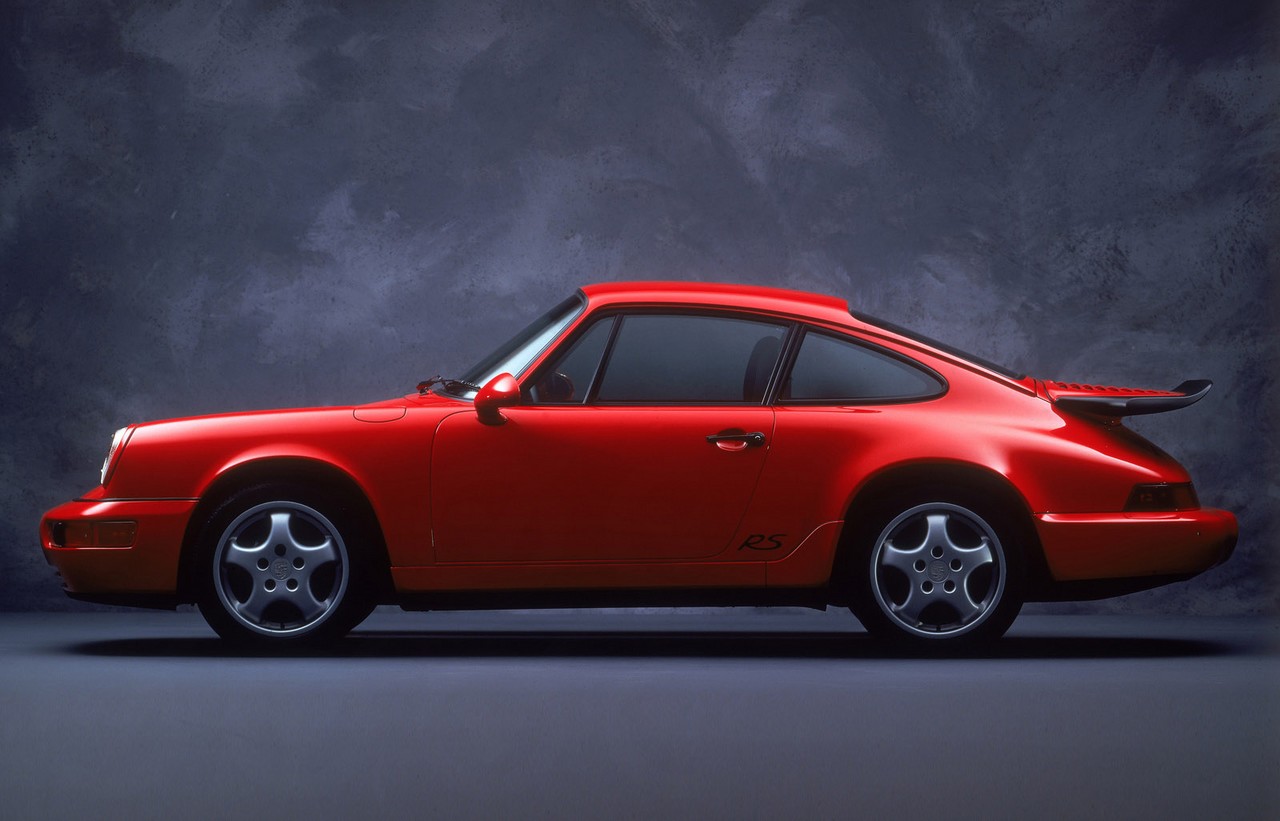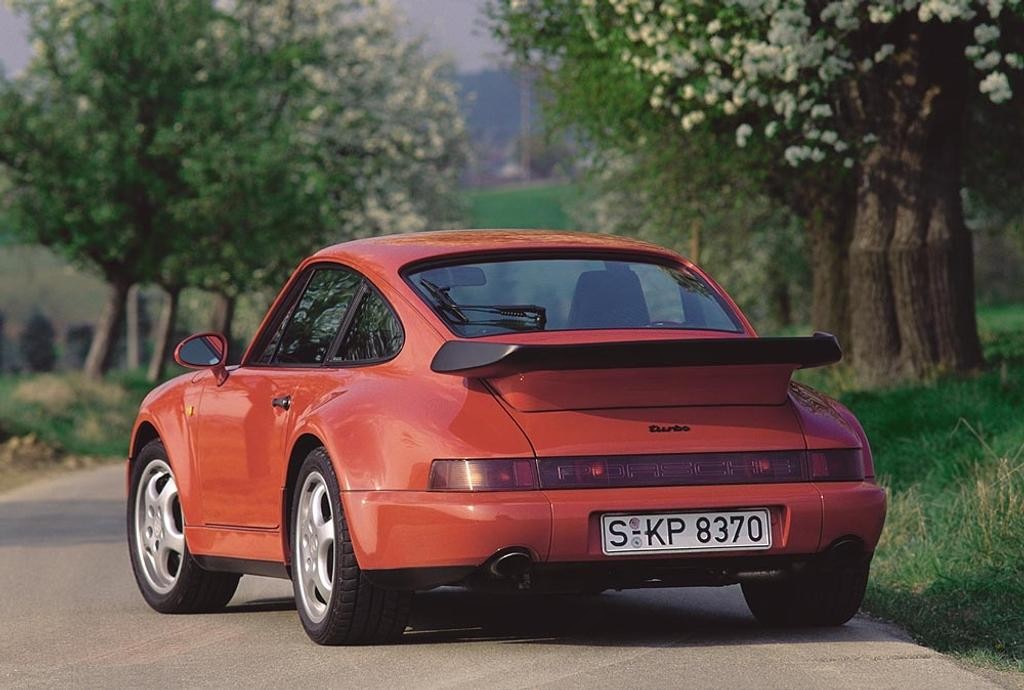
- Free-revving flat six-cylinder engines
- Manual transmission has smooth and progressive clutch take-up
- Accurate steering provides good feedback
- Responsive brakes
- Generally impressive dynamics…
- … but limited by semi-trailing arm rear suspension
- Overly firm ride
- Lift-off oversteer
- Sensitive brake pedal
- Poor positioning of switchgear
- Odd automatic transmission behaviour for the uninitiated
Overview
Released in October 1989, the Porsche 964 911 Coupe was a two-door fastback. Manufactured in Stuttgart, Germany, the 911 Coupe range initially consisted of the rear-wheel drive Carrera 2 and four-wheel drive Carrera 4 variants, both powered by a 3.6-litre horizontally-opposed (or flat) six-cylinder M64 petrol engine with oil/air cooling, dry-sump lubrication and a single overhead camshaft (per cylinder bank). Transmission choices consisted of a four-speed automatic or five-speed manual, though the Carrera 4 was solely available with the latter. From 1990, the Carrera 2 was available with a Tiptronic automatic transmission with adaptive electronic management.
In March 1991, the Turbo variant was released; unlike the naturally aspirated 911 variants, the Turbo had the same 3.3-litre engine as its 930 predecessor, albeit with upgrades to increase power, reduce turbo lag and improve refinement. From September 1993, however, the Turbo was fitted with a more powerful, turbocharged version of the 3.6-litre M64 engine. From 1992, the Carrera 2 was available with the 911 Turbo body which had wider rear wheel arches. In late 1992, the lightweight Carrera RS was released.
The 964 911 had MacPherson strut front suspension with coil springs and an anti-roll bar; at the rear, there were semi-trailing arms (the previous 930 911 had a rear torsion bar), coil springs and an anti-roll bar. The Carrera variants were also fitted with a rear spoiler which automatically deployed once the vehicle exceeded 80 km/h, though the Turbo and Carrera RS variants had a fixed rear wing. Furthermore, the 911 Coupe had a drag coefficient of 0.32 Cd.
| Variant | Drive | Years | Engine | Trans. | Peak power | Peak torque |
|---|---|---|---|---|---|---|
| Carrera 2 | RWD | 1989-94 | 3.6-litre petrol F6 | 5sp man., 4sp auto |
184 kW at 6100 rpm | 310 Nm at 4800 rpm |
| Carrera 4 | 4WD | 1989-94 | 3.6-litre petrol F6 | 5sp man., 4sp auto |
184 kW at 6100 rpm | 310 Nm at 4800 rpm |
| Carrera RS | RWD | 1992-93 | 3.6-litre petrol F6 | 5sp man. | 191 kW at 6100 rpm | 325 Nm at 4800 rpm |
| Turbo | RWD | 1991-93 | 3.3-litre turbo petrol F6 | 5sp man. | 235 kW at 5750 rpm | 450 Nm at 4500 rpm |
| RWD | 1993 | 3.6-litre turbo petrol F6 | 5sp man. | 265 kW at 5500 rpm | 520 Nm at 4200 rpm | |
| 30 Jahre | 4WD | 1993-94 | 3.6-litre petrol F6 | 5sp man., 4sp auto |
184 kW at 6100 rpm | 310 Nm at 4800 rpm |
4WD system
For Carrera 4 and 30 Jahre variants, the Porsche Dynamic Four-Wheel Drive (Porsche Dynamische Allrad Steuerung or PDAS) system consisted of an epicyclic (or planetary) centre gear differential and two electronically-controlled wet clutches which limited slip in both the centre and rear differentials. In normal conditions, the system provided a 31:69 front:rear torque split.
The longitudinal (inter-axle) clutch provided variable locking between the front and rear axle. When accelerating out of a corner, this longitudinal lock would direct more torque to the slower turning axle and the front:rear torque split was infinitely variable. The lateral (transverse) clutch, however, provided variable locking of the rear wheels to reduce lift-off oversteer when cornering (the ferraria effect).
Safety equipment
Standard safety equipment for the 964 911 Coupe was initially limited to ABS. From 1993, however, the 911 Coupe was fitted with a driver’s airbag as standard.
Features
Standard features for the 964 911 Coupe included 16-inch alloy wheels, a six speaker sound system with a radio and cassette player, climate control air conditioning, power adjustable front seats, leather trim, cruise control, front fog lights, central locking, power mirrors, power windows and an alarm.
1992 Porsche 964 911 Carrera RS
Released in 1992, the Carrera RS was a track-oriented variant that was fitted with a more powerful engine, 40 mm lower suspension, stiffer springs and shock absorbers, adjustable stabiliser bars, racing seats, a lightweight flywheel, a close-ratio G50/10 transmission and asymmetrical limited slip differential. Visually, the Carrera RS could be identified by its Turbo body (i.e. with wider rear-wheel arches) and fixed rear wing.
To reduce weight, the Carrera RS also had a seam-welded chassis and an aluminium bonnet. Further measures included the omission of sound absorbing material and features such as air conditioning, cruise control and power windows; a sound system was optional. As a result, the Carrera RS was approximately 155 kg lighter than the Carrera 2.
1993 911 30 Jahre
Released in March 1993 to commemorate 30 years of continuous production of the 911, the 30 Jahre variant was based on the Carrera 4 and fitted with the wider Turbo-style body. Compared to the standard Carrera 4, the 30 Jahre variant was distinguished by its 17-inch ‘Cup’ alloy wheels, full leather upholstery and sunroof. Furthermore, each vehicle was numbered (from 1 to 911), fitted with a plaque on the rear shelf and a badge on the engine lid stating ’30 Jahre 911′.
Related links
